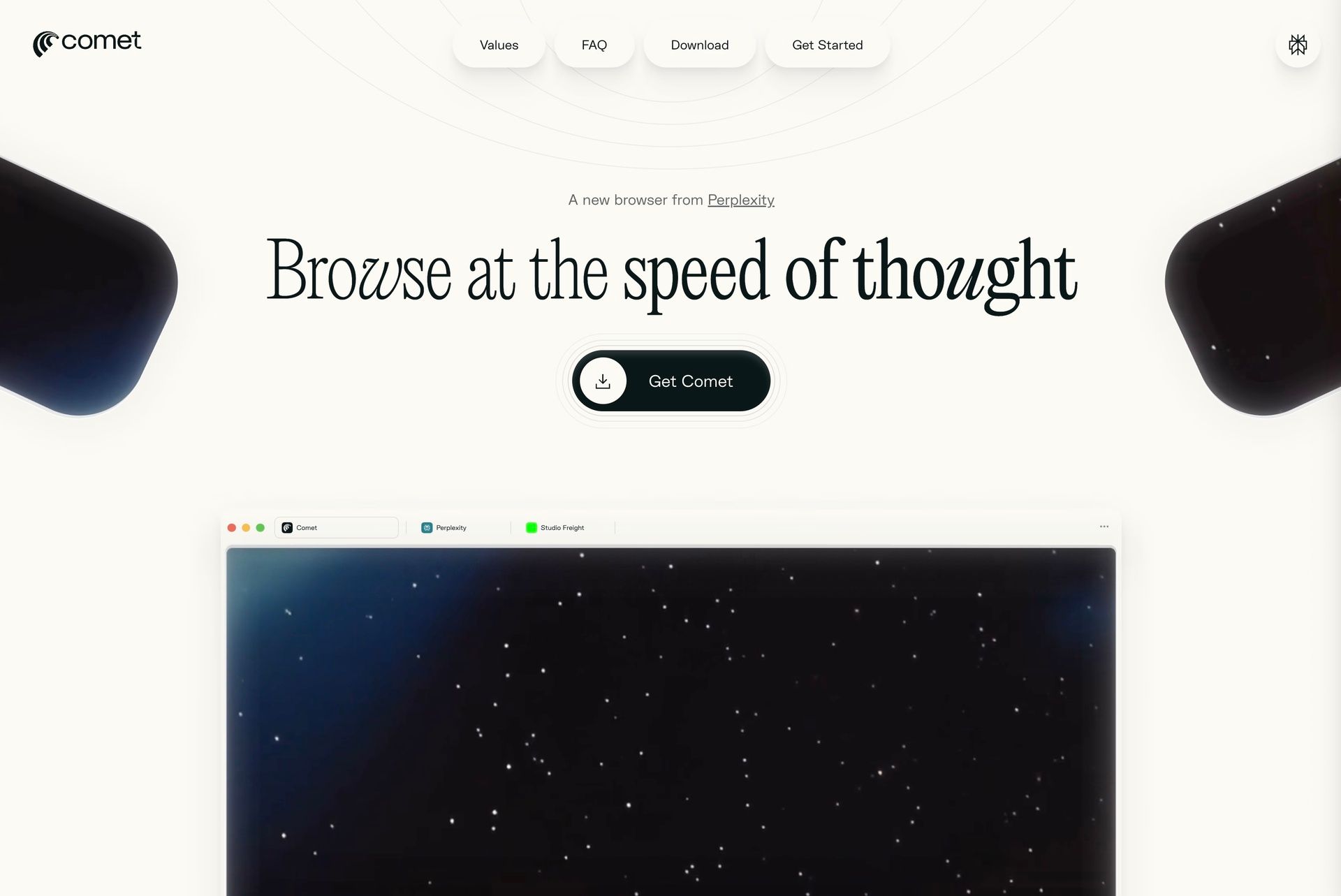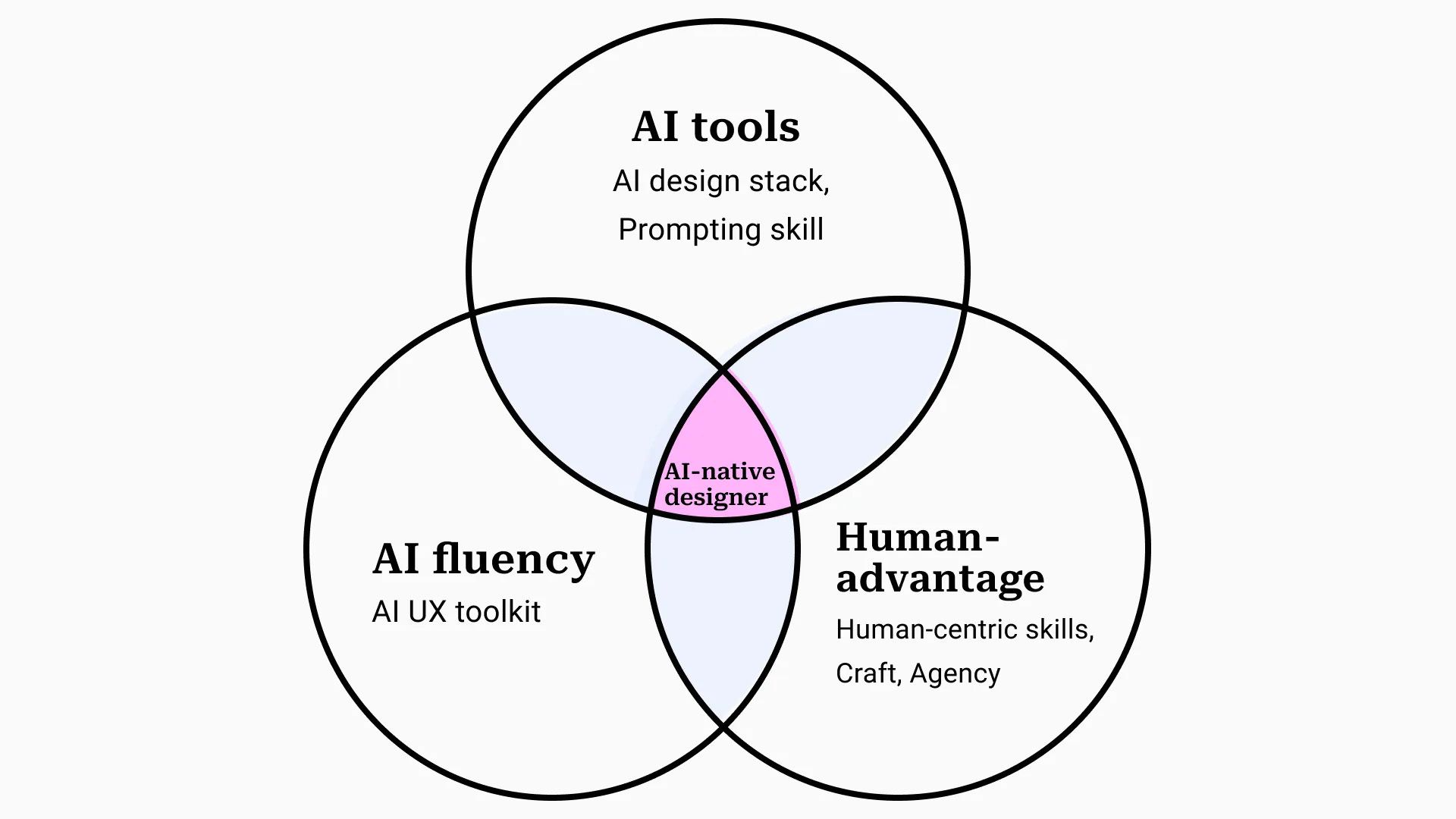- Designspun
- Posts
- AI Browsers Are About to Change Everything
AI Browsers Are About to Change Everything
Plus, how taste is the new intelligence and how to be an AI-native designer.
The Era of the AI Browser Is Here
For nearly three years, Arc from The Browser Company has been my daily driver. Tabs on the left, Spaces for organization, all those little interface ideas that added up to a productivity machine for web jockeys like myself. So I was saddened to hear in May that The Browser Company stopped actively developing Arc in favor of a new AI-powered browser called Dia.
I finally got access to Dia a few weeks ago. Around the same time, I also got access to Perplexity's new Comet browser. This post is about both and how the future of web browsing is obviously AI-assisted, because it feels so natural.
Chat With Your Tabs
What Dia offers that Arc does not is a way to "chat" with your tabs. It's a chat sidebar with the context of whatever page you're on, plus you can add additional tabs by @mentioning them.
I've been asking it to summarize pages for me or explain technical documentation in plain English. Or using it as fuzzy search to find specific quotes. For example, if I'm reading a CEO interview and want to know if he's tried the Dia browser, I can ask "Has he used Dia yet?" instead of reading through the whole thing.
Another use case: open a few shirts from an e-commerce store and ask for a recommendation. Dia also has customizable "skills" which are pre-saved prompts. I made one to craft summary bios from LinkedIn profiles.
It's cool. But I found it's a little limited because the chat is usually just with the tabs you feed it. It helps you digest information—an incremental step up from ChatGPT.
Enter Comet.
Browsing Done for You
Comet also lets you chat with tabs, and because Perplexity search is integrated, I find it's much better at context-setting than Dia. But that's not Comet's killer feature.
Instead, it's doing stuff with your tabs. So I tried an assistant experiment.
I often look up restaurants with OpenTable availability in Yelp (I trust Yelpers more than OpenTable diners). So I asked Comet: "Find me the highest rated sushi restaurants in San Diego that have availability for 2 at 7pm next Friday night on OpenTable. Pick the top 10 and then rank them by Yelp rating."
And it worked! It could have even booked the reservation if I'd asked.
I tried another experiment. I navigated to Gmail, checked three emails I wanted to unsubscribe from, and asked: "unsubscribe from the checked emails." The agent took over my Gmail screen, opened each email, and clicked unsubscribe. It succeeded on two of three (Gmail doesn't keep checkbox state, but Comet remembered the subject lines). The whole process took two minutes—longer than doing it manually, but the idea is to delegate and check back later.
I Want My AI Browser
Once I started chatting with my tabs, asking for summaries, seeking clarification, asking for technical content to be dumbed down, I just can't go back. The agentic stuff Comet does is just the beginning. It's not perfect yet, but as models get better, the utility will get there.
As Perplexity's CEO Aravind Srinivas put it: "I'm betting on the fact that in the right environment of a browser with access to all these tabs and tools, a sufficiently good reasoning model could get us over the edge where a recruiter's work worth one week is just one prompt."
AI-enabled browsers are the future. And honestly, it can't come fast enough.
(A longer version of this piece will appear on the blog on Monday.)
Highlighted Links
In an era where AI can produce limitless content, the real mark of value is no longer what can be made, but what is deliberately chosen to share. As Stephanie Tyler observes, curation—thoughtfully filtering, selecting, and presenting ideas—has become a rare and vital skill. In this climate, true creativity is less about volume and more about discernment, care, and the boundaries we set for our attention. |
As AI transforms the world of design, thriving in the new landscape means more than just keeping up—it’s about redefining how we create and find fulfillment in our work. As Sharang Sharma points out, mastering an evolving toolkit, developing true fluency in AI systems, and honing our uniquely human strengths are the keys to becoming an “AI-native” designer. Strategic thinking and a human-centric approach will set the next wave of creative leaders apart. |
The boundaries between design and engineering are blurring, making it common for designers to dive into code and implementation early in a project. Ted Goas points out that while anyone can now whip up a rough draft, it’s the expertise and taste of seasoned creators that turn rough ideas into polished results. The true differentiator in this new landscape is the ability to refine and elevate what technology alone can produce. |
What I’m Consuming
How Silicon Valley got rich. Silicon Valley’s true innovation wasn’t just the microchip—it was pioneering employee equity ownership, a model that transformed who could share in corporate wealth. Yet as tech fortunes soared, so did inequality, making the question of how to expand ownership beyond executives and investors more urgent than ever.
Fell in a hole, got out. Medium CEO Tony Stubblebine offers a candid account of how the company navigated near insolvency, slashed costs, and rebuilt both its finances and editorial quality. The platform’s remarkable turnaround, achieved through profit-focused restructuring and a renewed commitment to authentic writing, marks a new chapter for its community of readers and writers.
Reflections on OpenAI. Former OpenAI engineer Calvin French-Owen offers a rare insider’s look at the lightning-paced, bottoms-up culture powering the company’s meteoric rise and groundbreaking AI launches. His reflections highlight the challenges, ambitions, and unique DNA that make OpenAI one of the most fascinating organizations of our era.





